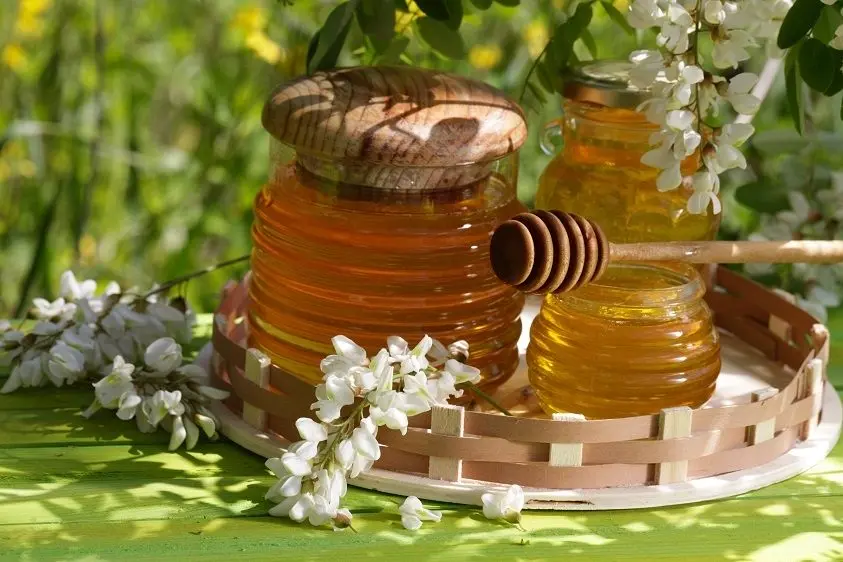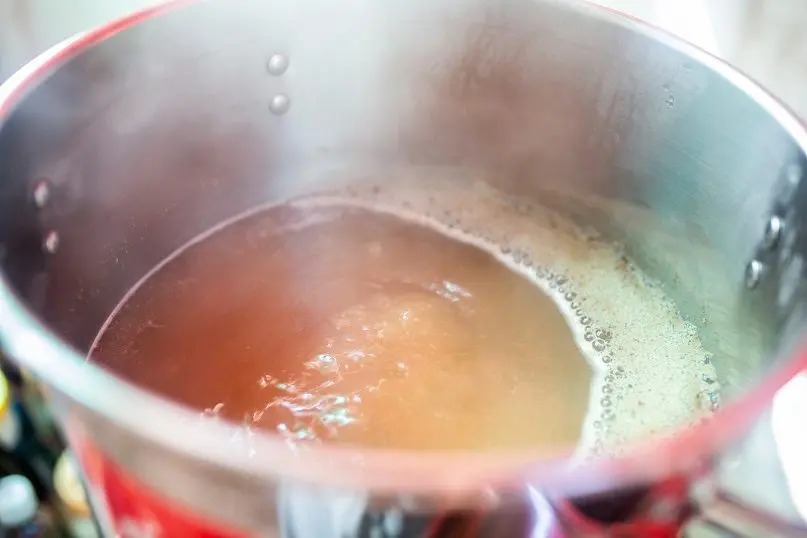Contents
Honey, like sugar, consists of glucose and fructose (only in different proportions), so it can be used to increase the strength and sweeten homemade wines. The use of honey in winemaking has its own specifics and requires preliminary preparation of raw materials.
Benefits of replacing sugar with honey in wine:
- cheapness – if you have your own honey, there is no need to buy sugar (glucose or fructose);
- a great opportunity to process old and substandard honey;
- can enrich the taste and aroma of some wines, such as floral ones;
- honey is a natural product that, unlike sugar, does not contain additives (formalin, lime, etc.);
- the technology of making wine does not change, it is only necessary to recalculate the proportions and purify the honey from third-party impurities.
Disadvantages:
- honey can give wine notes of caramel, other flavors and aromas, which is not always appropriate;
- wine with honey clarifies worse, more sediment appears in storage;
- advance preparation is required.
In most cases, honey is used in sweet, liqueur and fortified wines from raw materials, where it is permissible to enrich the aroma and taste with caramel tones – initially there are few dry substances in the juice. For grape, apple, cherry dry and semi-dry wines, honey is not the best option.
What kind of honey is suitable
The properties of honey depend on the type of flower nectar and the time of its collection. Often, flowery May, acacia or linden honey is used in winemaking, since these types have minimal effect on the organoleptic of wine.
Heather and chestnut gives a strong bitterness, sunflower brings excessive astringency, and buckwheat honey gives caramel tones and strong haze.

It is very important to be sure of the quality of honey, since a product purchased from unreliable suppliers may contain impurities (flour, starch, molasses, etc.), which, even in small concentrations, will irrevocably spoil the wine.
The fresher the honey, the better, but any honey will do, even candied honey.
Proportions for replacing sugar with honey in wine
Honey contains from 65,6 to 84,7% sugar, the average is 76,8%. This means that to replace 1 kg of sugar in the recipe, 1,232 kg of honey is required. More accurate indicators of the sugar content of the wort can be obtained using a hydrometer-saccharometer.
It should also be taken into account that 1 kg of sugar occupies a volume of 0,6 liters, and 1 kg of honey – 0,893 liters. In the case of honey, when the acidity of the wort is reduced with water or juice, the liquid requires 0,293 liters less.
Preparing honey for wine
Any honey contains impurities harmful to wine:
- pathogenic microorganisms that cause wine diseases;
- wax residues and the smell of wax, which worsen the organoleptic;
- proteins – give persistent turbidity;
- natural preservatives that interfere with the fermentation of wine yeast;
- organic acids – unpredictably change the taste of the drink.
The only way to eliminate the listed shortcomings is boiling. After heat treatment, honey will lose its beneficial properties, but it will become safe to add to the must.

Recipe
- Dilute honey with water in a ratio of 1: 1 in a saucepan for cooking. It is important to mix well so that the honey particles do not stick to the bottom and do not burn when heated.
- Bring the mixture to a boil, reduce the heat to medium, skim off the foam until the brew is clear.
- Reduce heating power to minimum. Boil until the volume in the pan is equal to the initial amount of honey (almost all the water has evaporated).
- Remove the pan from the stove, cool the honey to room temperature, then strain through several layers of cheesecloth.
- Add honey to wine according to the recipe. With fractional introduction in several visits, boiled honey can be stored in the refrigerator in a hermetically sealed container.










سلام
یکی از دوستای من تو شرایش عسل ریخته بود شرابش شور شد علت چی میتونه باشه